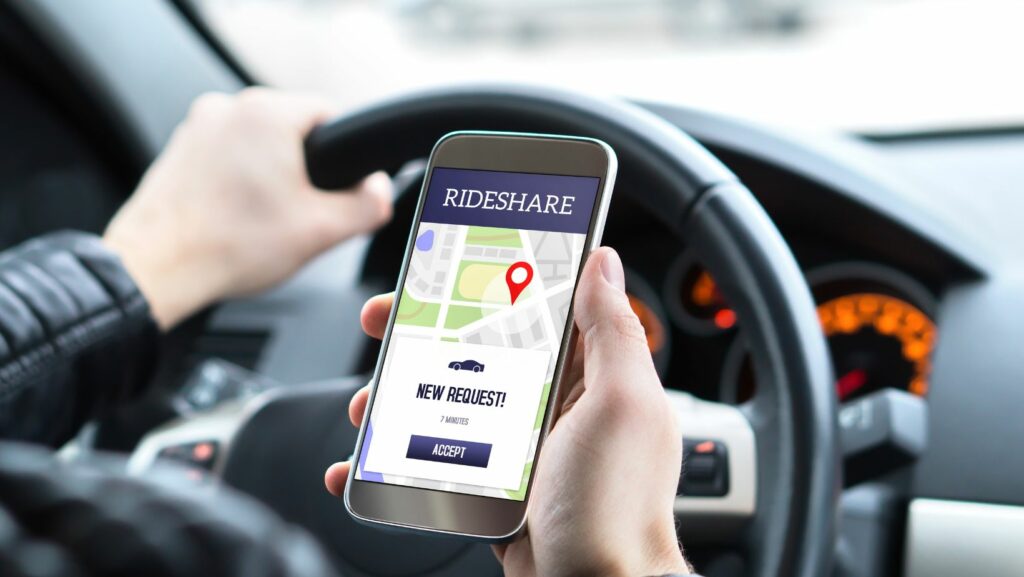In the world of ride-sharing, two giants reign supreme: Uber and Lyft. Each has its own unique selling points, but when it comes to the bottom line, it’s all about cost. So, who’s got the better deal?
Whether you’re a ride-sharing newbie or a seasoned commuter, you’ll find this analysis invaluable.
Factors Influencing Ride Prices

Differing factors come into play when assessing “uber vs lyft prices”, each contributing to pricing variations. Two significant considerations frequently impact the final ride costs: The time of day and the pickup location. These aspects not only affect cost considerations for riders but also signify key operational strategies employed by Uber and Lyft.
The time of day plays a notable role in the price calculation for both Uber and Lyft. During periods of high demand, often during rush hours or weekends, these companies react to the surge in demand by raising ride prices. Under Uber, it’s known as ‘Surge Pricing’, and under Lyft, it’s called ‘Prime Time’. This flexible pricing model primarily incentivizes more drivers to become available, ensuring supply meets increasing demand.
Location also impacts on the “uber vs lyft prices” debate significantly. Residing in a high-traffic urban area means encountering higher prices, simply because of the increased demand for ride services. Large cities like New York or Los Angeles, which are densely populated and see a high volume of ride requests, have higher prices compared to smaller towns or cities.
Uber vs Lyft Prices

Delving deeper into the analysis of prices between Uber and Lyft, specific variables, such as price variation in different cities and surge pricing policies, merit in-depth discussion to understand the “Uber vs Lyft Prices” scenario better.
In regard to prices in different cities, both ride-hailing services exhibit variance. For instance, Uber in New York City, according to a Business Insider report, tends to be less costly than Lyft. However, in cities like Los Angeles and San Francisco, Lyft often proves more affordable. This disparity owes, primarily, to demographics, demand, and operational costs specific to each city.
| City | Uber (avg. cost per mile) | Lyft (avg. cost per mile) |
| New York | $1.75 | $2.20 |
| Los Angeles | $1.55 | $2.00 |
| San Francisco | $1.50 | $1.80 |
Surge Pricing: Uber vs. Lyft

Discussing surge pricing, it’s a strategy used by both Uber and Lyft to adjust prices during periods of high demand. Uber terms it as “Surge Pricing,” while Lyft calls it “Prime Time”. While surge rates for both companies can swing high during peak hours, like rush hour or post-events, there are subtle differences.
Despite those differences, users will generally find both services adjust prices higher during times of high demand, which of course, inflates the overall cost of a ride. This plays an influential part in the “Uber vs Lyft Prices” debate.
Customer Perspectives on Ride Pricing
Diving further into the “Uber vs Lyft prices” analysis, customer perspectives serve a pivotal role in understanding price preferences. This segment elaborates on user reviews and individual alternatives based on varying pricing structures.
User Feedbacks and Preferences
Insights reveal consumers cautiously compare both Uber and Lyft prices before deciding on which service to use. Customer reviews indicate a general trend of users leaning towards whichever service offers the better fare at any given time.
Additionally, riders in major U.S. cities where price variations are prevalent, such as New York, Los Angeles, and San Francisco, extend their strategies by scrutinizing both Uber’s “Surge Pricing” and Lyft’s “Prime Time” policies. This analysis allows them to skillfully dodge high fares during peak demand periods.
So, next time you need a ride, remember that the best choice isn’t always the cheapest. It’s the one that offers the best value for your money.



